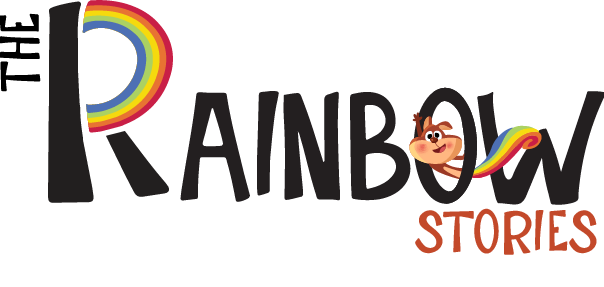Fantasy book cover design ideas transport young readers into realms filled with magic and wonder before they even open the first page. A captivating fantasy book cover sparks curiosity through enchanting characters, mystical symbols, and a well-chosen color scheme that reflects your story’s emotion and tone. For children’s fantasy, integrating vibrant hues with whimsical imagery is key to creating an eye-catching visual narrative.
In this post, you’ll discover creative book cover design tips, learn how to weave magical elements into your cover, and explore practical techniques to make your fantasy book cover design ideas truly shine—inviting adventure and imagination at first glance.
The Magic Behind Fantasy Covers
Blending fantasy book cover design ideas means weaving ornate typography and mythical imagery into an eye‑catching visual narrative. Fonts like Gothic or Trajan, enhanced with texture or gradients, hint at magic and lore while ensuring clarity in thumbnails. Incorporating mythical creatures dragons, unicorns, griffins or enchanted landscapes instantly conveys a sense of wonder and adventure.
These fantasy covers evoke emotional resonance, serving as portals to mythical realms. A well-balanced design merges symbolic imagery, mystical typography, and evocative color scheme, creating a fantasy book cover design that captures imagination at a glance.
Subgenre-Specific Style Ideas
Urban Kid-Friendly Fantasy
Combine cityscapes with glowing magical symbols. Neon accents in a color scheme of purples and blues can create urban wonder. These fantasy book cover design ideas suit middle-grade readers seeking wonder in everyday life.
Epic Adventure for Kids
Paint towering castles, brave young heroes, and dragons soaring across skies. Rich, bold fantasy book covers in dark emeralds, golds, and reds communicate adventure and mystery. Bold typography evokes grandeur and epic scale.
Dark Fantasy with Child-Friendly Edge
Use shadowy silhouettes and magical runes. A touch of crimson or muted twilight color scheme adds excitement while staying age-appropriate. This approach balances spooky and safe for older kids venturing into darker tales.
Whimsical YA Fantasy
Bright teal, magenta, or pastel palettes with whimsical dragons, sprites, or magic-books evoke youthful fantasy. For ages 6–12, color scheme choices that pop with fun and inclusivity make the cover irresistible.
Design Techniques to Add Magical Appeal
- Symbol-Driven Graphics: Magical artifacts (crystals, wands) can symbolize plot without showing full scenes.
- Typography as Enchantment: Treat the title like an enchanted rune, integrating serifs and scrollwork into letters for visual magic.
- Thumbnail Legibility: Create covers that still pop in thumbnail view yet reveal magical textures up close.
Bring Your Children’s Story to Life with Magical Book Illustrations
Partner with talented Book illustrators at The Rainbow Stories who specialize in creating lovable characters and enchanting scenes for children books and early readers.
Color Scheme & Mood
Color sets emotion: purples suggest mystery, golds imply royalty, greens evoke nature. Bright warm hues spark excitement; cooler blues invite calm adventures. Choose a palette that reflects your story’s emotional tone and proves visually magical.
Children-Focused Cover Tips
Age-Appropriate Styles
- Ages 6–9: Vivid color scheme, pastel pastels, clear character focus.
- Ages 9–12: More layered visuals, nuanced typography, and adventurous motifs work best.
Character-Centric Magic
Children connect with characters whether human, animal, or mythical. Featuring a child mage or friendly creature invites empathy. Use expressive eyes, dynamic poses, and space for title balance to support book cover design tips.
Botanical & Nature Motifs
Incorporate vines, glowing mushrooms, or magical forest scenes. These nature-based elements enhance the fantasy book cover design ideas and dovetail with popular whimsical aesthetics for kids.
Design Workflow & Tools
- Concept Sketching: Draw rough ideas integrating magical symbols and character placement.
- Digital Render: Use Procreate or Photoshop; refine in Illustrator with layered typography.
- Bleed & Spine Setup: Prepare CMYK files for print, ensuring fonts and symbols wrap correctly around spine and back.
- Testing: View thumbnails to verify fantasy covers remain legible and striking.
Testing & Feedback
Share your cover with target-age readers, parents, and educators. Evaluate thumbnail views online, full-size visuals in print. Use feedback to tweak contrast, typography clarity, and color scheme harmony to ensure your cover’s magical appeal.
Inspiration Gallery
Explore excellent examples: Dragon-focused covers for epic fantasy, neon-lit cityscapes for urban fantasy, and symbolic objects for mystery. Ebook Launch’s compilation and MiblART’s gallery offer valuable inspiration.
Bonus: Collectible Editions
Consider deluxe editions with foil stamping, embossing, or sprayed edges. These touches heighten the magical feel and are popular with collectors—especially among fantasy-loving kids and parents.
Conclusion
A compelling book cover design service offers more than just a magical look—it serves as a vibrant gateway into imaginative worlds that inspire and nurture young minds. Thoughtfully crafted fantasy covers spark curiosity, grow creative thinking, and support emotional development in children.
Using enchanting imagery, age-appropriate color scheme, and mythic fantasy book cover design ideas, you create visual invitations that resonate with both kids and families.
Pair ornate typography with symbolic elements and test your work at thumbnail scale. With these book cover design tips, your cover can truly enchant readers encouraging exploration, wonder, and lasting attachment to your fantasy tale.For more inspiration and professional design services, visit The Rainbow Stories.

